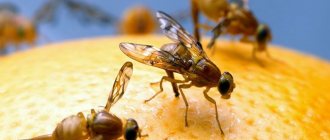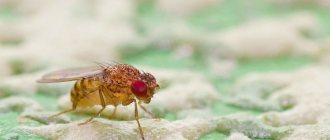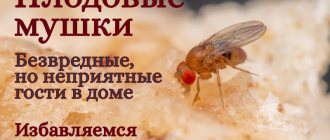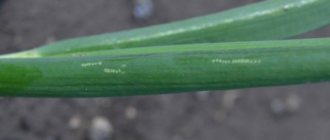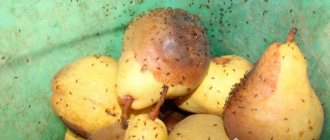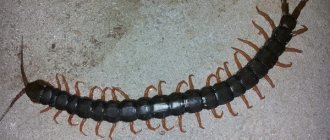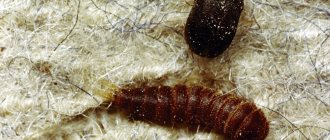Fruit gnats are annoying tiny creatures whose presence in the house itself irritates all its inhabitants. When these little creatures, not limited to annoying flickering, begin to actively spoil food, and in addition also try to bite, the patience of the residents comes to an end, and they urgently begin to look for means to combat the annoying aliens.
Reasons for appearance
The most interesting thing is that there is an explanation for all of the above. Insects choose the most suitable places for living and breeding. And which ones - it depends on the type of midges. But first things first. First, let's figure out how these crumbs appear in the apartment.
There are several reasons:
- Fruits and vegetables are not the freshest . The smell of plant rot is the most desirable aroma for small insects, and spoiled and fermented fruits, juices, compotes, beer are the best delicacy. In addition, this is a very suitable environment for growing offspring. It is worth noting that the female can lay eggs on still ripening vegetables and fruits, and when they get indoors, the larvae will receive the most favorable conditions for growth.
- Wet rags, poorly cleaned or clogged sink . High humidity not only pleases the midges, but makes them simply happy. If you add to the first the accumulated particles of food that have begun to rot, a rotten coating on surfaces and wet rags, and the unpleasant smell of all this, then it immediately becomes clear why insects are in such a hurry to “capture” these territories.
- Flower pots with indoor plants . Many housewives feed their indoor plants with used tea leaves. At the same time, excessive watering leads to rotting of tea leaves, the appearance of particles of rot and mold, plaque and an unpleasant odor. These are ideal conditions for midges. Plus the humidity is constantly high.
- "Generous" neighbors . If midges live with your neighbors permanently, then there is a very high probability that they will also want to visit nearby premises.
- Trash can and bags . A trash can that is taken out at the wrong time will immediately become a haven for small insects. Dirt and the remains of spoiled food will become a feeding ground for both adult midges and their larvae. Waste that has fallen onto the surface of a garbage bag or bucket and has not been noticed is perfect for laying eggs.
- Pets . In this case, it's not about the animals themselves, but about us. More precisely, we are talking about how we take care of our “smaller brothers” and monitor the cleanliness of their place of residence. When algae has grown in the aquarium and the water has stagnated, the cage with the rabbit has not been cleaned, pieces of vegetables are lost in the sawdust of the hamster, and the dog’s bowl has not been washed for a long time, sooner or later the organic matter will begin to rot and attract midges. And they will already find an opportunity to roam and bring offspring.
To summarize, we can say that there is still a danger from midges staying in an apartment. Insects do not sit still, they “travel” to different places and objects. They can start with a rotten apple in a trash can or with moldy soil in a flower pot, and end in the kitchen, on the dining table. The route may be different, but the essence is the same: willingly or unwillingly, they are carriers of many harmful bacteria that can lead to infections. Consequently, the entire life of small insects depends only on human actions, on keeping the house clean and carrying out preventive work.
Interestingly, insects can live in a city apartment all year round. Their number depends on the presence of a favorable environment and temperature. In summer, when the temperature is more than 18°C, they live for about 3 weeks, at low temperatures - about 1.5 weeks, and at zero - the insects die. In addition, larvae and adults die after a few days if they have nothing to eat
Features of the fight against midges in other parts of the house or apartment
The bathroom is a place where a favorable environment for the life of small insects is created. They emerge from the sewer pipe, where the best conditions for their reproduction are created. For preventive purposes, you need to periodically disassemble and clean the drain and pipes, and use household chemicals to remove blockages.
In a private home, the situation can be complicated by the presence of a basement, where vegetables and fruits are often stored. It is important to constantly inspect and sort through stored products. Perishable vegetables should be removed from the basement. If the pests have not disappeared after all the manipulations, you can put fresh basil leaves or a cloth soaked in essential oil in the basement.
Types of midges
It would seem that very small midges will not create problems and getting rid of them is a couple of trifles. And this, indeed, may be the case. But only if there are only a few insects, the reason for their appearance is immediately found, measures are taken to eliminate the pests, cleaning is carried out immediately and everything necessary is done to prevent their reappearance. Otherwise, drastic measures will have to be taken in full. Since it is already known how “kids” appear in the apartment and where their favorite places are, we need to find out what they are, whether they are the same or different, what are their differences and characteristic features.
The family of dipterous midges has about 2000 species. This article discusses the most common domestic species.
- Drosophila (wine or fruit midges)
The size of the insects varies from 1 to 3 mm, the color can be light or dark brown, dark yellow, rarely, but orange or black individuals can be found. Most often, midges can be found in the kitchen, where they look for fruits, sweets, and vegetables, which they can eat and lay eggs on. Pests will not ignore fermented juices and alcohol, and will not fly past the sink or trash can.
- Sewer (humpbacks)
The body of insects has a thick “hairy” covering. These midges are delighted with dampness, dark rooms, leaky sewers, a dirty kitchen or a clogged sink. They can become carriers of dangerous bacteria.
- Whitefly
Whiteflies have a characteristic body color; it appears to be covered with powdery white pollen. Insects can reach from 1.5 to 3 mm in length. Midges like warm, rarely ventilated rooms. It’s good if there are indoor plants in the apartment, the soil of which is oversaturated with moisture, then the presence of small pests can be easily determined by the sticky white coating on the shoots. They eat plant sap, and under the leaves you can find larvae that look very much like scales.
- Sciarida (fungus gnat)
Small black midges (from 3 to 5 mm) are also partial to indoor plants. Insects flying over apartment flora are harmless; they reproduce in the soil of flowers oversaturated with moisture, but the larvae grow quickly, taking juices from the roots of plants and nutrients from the soil.
You can also often find pests in homes:
- Wardrobes (they love wardrobes).
- Water (they look for places where the humidity is highest or where there is constant water).
- Gnusov (bite a person).
When the type of midges is known, it is much easier to choose a method to combat them. But, first of all, it is necessary to eliminate the cause of the appearance of insects in the apartment.
Midges in the bathroom: how to get rid of them
The bathroom in the house is a place where insects like to gather. This is due to a number of factors, such as high humidity, the possibility of penetration through sewers, and the presence of damp, unwashed rags.
In addition, if general cleaning is not done on time, the bathroom can turn into a kind of incubator for midges. Therefore, you need to regularly clean the sewer, using special means, such as “mole”. This product is sold at any hardware store. How to use it is written in the instructions. It should be remembered that this remedy, under certain conditions, can harm a person. Usually the product is poured into the sink or poured, after which a glass of hot water is poured. After some time specified in the instructions, the product is completely washed off with warm water.
If there is high humidity in the bathroom, then you should pay attention to the operation of the ventilation system. Quite often, such systems simply do not exist. This applies to the private sector, but in apartments they can simply be packed, even from the time of construction.
Do not leave wet, unwashed rags in the bathroom. In addition to the fact that they emit an unpleasant odor, they attract midges in clouds. This is especially true in summer, when moisture and elevated temperatures create favorable conditions for the reproduction of midges.
The easiest way to get rid of midges at home | Life hacker
Eliminating causes depending on the type of midges
Different pests require different approaches.
Drosophila in fruit
- Throw away all spoiled fruits, vegetables and fermented berries.
- Get rid of all fruits that are in doubt, as they could come into contact with midges and become carriers of insect larvae.
- Conduct an audit of all available products and carefully check their expiration dates.
- In the room with “tenants”, do a thorough cleaning using household chemicals.
- It is advisable to install anti-mosquito nets with a minimum mesh on the windows.
Humpbacks in pipes
- It is necessary to make sure that the communication systems (sewage, drainage and water supply) are in good order: there are no leaks, rotten areas (on metal risers), accumulation of debris and mucus in the siphons of kitchen sinks and bathtubs, etc.
- Carry out work to eliminate problems with pipes using cleaning and disinfection products.
- To repel or kill insects, use insecticide sprays.
- At least once a week, use special gels or other cleaning products to treat drains.
- Carry out preventive treatments regularly.
Fungus gnats in indoor plants
- Check the flower soil for its moisture level and change the plant watering schedule.
- Make sure that each pot has proper drainage.
- Partially or completely replace the soil, pre-treating it with appropriate fungicides.
- Use mineral fertilizers produced by industry, following the manufacturer's recommendations.
- Periodically treat plants with special chemical compounds.
Getting rid of fungus gnats in indoor plants
If you notice small midges in pots with indoor plants, then most likely they are fungus gnats. Here are a few steps to get rid of such pests:
- Stop watering your plants —fungus gnat eggs and larvae can only live and develop in moist soil.
- Use chemical or biological insecticides to treat potting soil. You can use chemicals based on bifenthrin, cyfluthrin, permethrin and lambda-cyhalothrin, or natural ones - nematode worms or a special strain of live bacteria Bti (Bacillus thuringiensis ssp. israelensis). The latter can be purchased in the form of loose granules or pressed discs.
- Purchase sticky leaf traps for adult flying fungus gnats.
- Adjust the watering schedule to prevent the soil from becoming waterlogged . Otherwise, this is a direct road to the return of mosquitoes!
Traditional methods
Many housewives are not supporters of chemistry - today there is enough of it everywhere. Therefore, they successfully use folk methods, homemade traps, or traps that are as safe as possible for humans. Most methods are designed for the insects’ reaction to different odors, and since midges are not fans of aromatherapy at all, the methods are very effective.
Ground cloves (drenched in boiling water)
Apartment midges are not at all delighted with this spice, but it can easily make them run away from the house, as far as possible and as quickly as possible. To do this, pour 5 g of ground cloves into 1 glass of water and put on low heat for 2 hours, achieving a rich, specific smell that repels insects.
Garlic
Many insects cannot stand the smell of garlic, and midges are no exception. Therefore, if you place the cloves of this vegetable (whole or sliced) on shelves or near pots of plants, the midges will scatter in all directions.
Horseradish
Similar to the previous vegetable, you can use chopped horseradish left in the kitchen. The specific aroma of the plant's roots will quickly disperse insects.
Tomatoes
Tomato seedlings or already mature plants growing indoors in pots will become a big problem for the ubiquitous midges. Green tomatoes have a characteristic smell that insects do not like, which means the latter will not stay in the apartment.
Geranium
This indoor flower can, without exaggeration, be called a universal remedy for many insects. Moths, mosquitoes and flies cannot stand the smell of this plant at all; you can safely add midges to their friendly team. Indoor geranium on the windowsill will both decorate the room and protect it from pests.
Essential oils
Insects, indeed, actively react to different odors and to many of them their reaction is negative. Today you can find a wide variety of essential oils that will not only drive pests out of your home, but also fill it with pleasant aromas. If you choose sets of 3-4 oils, the effect will be much better:
- Camphor, cloves and tansy.
- Incense and fir, pine and patchouli.
- Vanilla, geranium, wormwood and tangerines.
- Ylang-ylang, lavender and lemon.
- Cedar and pine, tea tree and juniper.
You can achieve a good effect from the use of essential oils not only with the help of an aroma lamp, but also by applying a few drops of oil to a warm frying pan, to the lampshade, to the radiator (if the heating season has already begun). You can place sprigs of tansy and wormwood in the room on shelves - a bay leaf, or treat the surfaces with a spray bottle of water to which a few drops of any essential oil have been added.
Indoor lemon
An indoor lemon tree will be an excellent ally in the fight against midges. And when crushed in your hands, the leaves will fill the entire room with their aromas and help you forget about small pests for a long time.
Hellebore water
Hellebore water is well known to many as an active antiparasitic agent used to combat head lice. But it has a deadly effect not only on lice, but also on apartment midges. To get rid of flying pests, you need to moisten a dish sponge with the specified solution and place it in the place of greatest concentration of midges for 8 hours. During this time, the insects will die.
Matches
When midges periodically appear on indoor plants, you can use the most ordinary matches (4-5 pieces) to combat them. They need to be stuck into the ground with the sulfur heads down. When the sulfur dissolves, the matches must be replaced with new ones. This procedure must be carried out several times (every other day for a week) to completely expel the pests. Not bad for the same purposes ( freeing flora from insects ):
- Wood ash. Sprinkle the soil generously in the pots.
- Potassium permanganate. Water the soil with a solution of small concentration (very carefully so as not to harm the plants).
- Citrus scented soap. Treat the flower leaves with the prepared soap solution, leave for a while, and then rinse.
- A solution of tar and laundry soap (20 g of soap shavings per 1 liter of water). Water the soil around the plant with a very weak solution.
- Cockroach chalk. Finely crush and sprinkle on the ground.
- Garlic infusion. Chop 3 garlic heads, pour 1 liter of boiling water and let it brew for 4 hours. The product is suitable for treating soil and flower leaves.
Disinsection of surfaces
Flying midges are not constantly in the air; sooner or later they land on surfaces - window sills, walls, window frames. These areas can be treated with a general purpose pest insecticide that will kill the pests on contact. Any aerosol insect repellent that you find in the store will be suitable for this purpose, for example, such as:
- Raid
- BROS
- Bona Forte
- Delicia Station Wagon
- Doctor Klaus
- Taiga Barrier
- Dichlorvos Varan
- Combat Multispray
You can also manually treat entire rooms with insecticides, spraying an aerosol into the air around the perimeter of the room, or use foggers - self-spraying insect repellent aerosols for rooms. Bona Forte, Dr.Klaus, Argus have products in this form. You can find instructions for use of any drug on its label or on the manufacturer’s official website.
Carefully!
Insecticides should not be used on surfaces in contact with food, dishes, plants, children's toys, bedding, clothes and pet items.
If insects hover near the drains of sinks, bathtubs, washing machines, or around water pipes, then the area around them and all drains in the house must be treated with ordinary household chemicals. Liquids can be poured into pipes to clear blockages, as well as universal gels:
- Tiret
- Domestos
- Cif
- Frosch
- Comet
- Synergetic
Midges lay larvae in drain holes and feed on microorganisms growing in a humid environment. Regular cleaning of pipes
helps not only to destroy pests inside the communications, but also to reduce the likelihood of sewer blockages.
Helpful advice
To repel midges that may fly in from the street, you can use mosquito fumigators with liquid or plates, but turn them on during the day and not in the evening before bed.
Homemade traps
The advantage of self-made traps is that they are completely safe for people, and for making them you can use the simplest and most affordable means at hand.
Glass jar
To attract insects, place a few pieces of spoiled fruit or pour a little beer, jam, sugar syrup, etc. at the bottom of a glass jar (volume 0.5 l or 1 l). Cover the top of the container with cling film or a cellophane bag. Make several small holes in a well-tightened “lid”, which will become “entrance doors” for midges rushing to the treat. But the midge will no longer be able to get back out.
Instead of a can, a disposable plastic cup is often used, but paper can be an alternative film option without any problems. Just don’t cover the neck of the jar with it, but make a funnel with a small hole at the end. Insert the resulting cone into the jar with the bait, tip down, cover the joints with tape and the trap is ready. If plastic devices can be disposed of along with midges, then what to do with the jar? There is an opinion that a jar closed with a polyethylene lid can be placed in the microwave for 30-40 seconds at a power of 600-700. All insects will die, and nothing will happen to the container.
Plastic bottle
Cut off the top part of a 1.5-2 liter bottle. Turn the resulting cone over and insert it into the remaining lower part of the container. To ensure that there are no gaps left, seal the joints of the two elements (on the side) with tape. Place your favorite midge treats at the bottom of the structure. For insects that get inside, there is no way back.
Detergent solution
The trap is convenient because you don’t have to figure out what to cover it with or how many holes to make. Everything is very simple. Fill any container ¼ full with warm water, add 1 tablespoon of apple cider vinegar and 1 teaspoon of dishwashing liquid or shampoo (the amount is given per 0.5 liter jar) - the device for catching midges is ready.
Plastic bag
The simplest version of the trap. You need to put a rotten piece of banana or a few “stale” apple cores in the bag. Open the package slightly and wait until the insects have settled inside and there are a sufficient number of them. When you decide: “It’s time!”, the trap must be carefully and quickly tied, and then thrown away along with the contents.
The bait for annoying midges can be sour or sweet liquids: apple and wine vinegar, wine, juice, beer, compote or honey
Brew trap
Midges will never fly past dessert wine or beer. To lure insects into a trap, it is enough to leave an open, empty, but not washed bottle of “tempting” drinks on the table. In less than a couple of hours, there will be an incredible number of fruit flies inside the trap. All that remains to be done is to quickly plug the cap and throw away the bottle.
Milk, water and formaldehyde
An effective trap that can be placed not only in problem areas, but also on a table or windowsill. The composition is prepared from water, milk and formalin in proportions 5:3:1. The mixture is poured into a plate or not very deep bowl and placed in the place of greatest concentration of pests.
Milk with pepper
The proposed trap is made similarly to the method described above. Add 4 tablespoons to 1 glass of warm milk. lie ground (black) pepper and 8 tbsp. lie Sahara. The mixture is boiled for 10 minutes over low heat, and then a small plate is filled with it and insect catching begins. You can soak sheets of paper in this solution and hang them over areas where midges accumulate. Diptera will be tempted by sweet and peppery baits, for which they will pay with their lives.
Are fruit flies dangerous? What do you need to know about them?
Let’s immediately answer the main question about any house flies. NO, fruit flies do not bite humans! They simply have nothing to do with it... Moreover, many experts claim that they cannot tolerate harmful pathogenic substances at all. Although, theoretically, fruit flies can become carriers of infection. But apparently this doesn't happen often in their lives (fruit flies don't travel much and don't live very long).
Why are fruit flies dangerous for humans?
1. Of course, these are the enemies of food production and public catering outlets. In rooms where a lot of food is stored, especially ripe fruits, flies appear quickly. As a result, food products receive physical damage. In some cases they are not paid attention to. And sometimes the product becomes completely unusable. As a result, large transcontinental fruit carriers suffer serious losses every year. Small businesses are also suffering. Owners of restaurants and greengrocers are simply tormented by how to get rid of unattractive insect nests.
2. They harm not only huge warehouses, but also small cellars with food . Farmers and those who like to stock up for the winter find midges in bags of flour and sugar, in potato storage, as well as on tomatoes and oranges laid out on the verandas. The presence of larvae in these fruits does not bode well for their owners and consumers. The sanitary situation here will deteriorate until the owners get down to business.
3. The midge is simply boring. It flies into the mouth, nose and eyes... stains wallpaper and snow-white curtains... scares guests and small children. In general, this is an unpleasant neighborhood.
4 . They also harm the harvest that has not yet been harvested . Gardeners and owners of garden areas near their homes know that midges can easily “undermine” the fruits of your plants outdoors. Twin brothers of domestic fruit flies will also willingly populate your favorite apple trees, tomatoes, eggplants, apricots and peaches with their babies. Perhaps the damage from them will not even be noticed by the human eye and stomach. But who wants to eat fruit laden with insect larvae?
The situation is complicated by some species characteristics of these insects.
Do you know that:
- Fruit midges are extremely prolific . A female Drosophila leaves almost 20 insects in one ovipositor. Moreover, they begin to reproduce within 8 hours after birth. By the way, experts warn: the larva turns into an adult fly in 8-10 days. This is non-stop.
- They lay eggs directly under the skin of ripe or overripe fruits . True, the heroes of this article cannot bite through the too thick “skin”. Therefore, they almost never settle in whole watermelons, melons, etc. They prefer everything “soft”.
- "Fruits" are able to lay offspring in decaying organic matter. Therefore, they settle in sinks with clogged drains along with sewer flies. Hence the confusion between these two species.
- The midge is born early in the morning . A person is sleeping at this time and may not notice how hordes of insects have appeared from the emptiness in his house.
- The taste preferences of fruit flies are extremely democratic - usually fruits. The Tephritid species alone feeds and reproduces on 400 plant species.
- They also enter the house through open windows and entrance doors . The midge likes to live in one location, but can still make very serious flights on its weak wings if it is deprived of food. This is the basis for a simple principle in the fight against fruit flies: leave them without a nutrient medium... and they will stupidly fly away!
- In nature, there are natural baits for midges. These are manure and lake water, spicy and sweet smells. Flies are even attracted to air fresheners if they smell like orange, lemon or cherry. If insects have not yet appeared in your home, it is better not to overdo it with these odors. Otherwise they will definitely arrive.
- Fruit flies are slow but alert. They capture fast movements well and fly away. Therefore, when hunting for midges, move smoothly, like a Japanese ninja.
- The midge loves moisture and does not like dry surfaces . She is almost not afraid of severe frost and loves alcohol.
Now that you know everything about them, it’s time to talk about how to get rid of midges in your apartment. Personally, we believe that fruit gnats do not necessarily need to be killed. They are not opposed to humans, and the harm they cause is accidental. True, to remove them “bloodlessly”, you need to spend more time. But for those who do not have time to wait, there are more radical measures. We'll talk about both of them below.
Mechanical methods
The action of some products requires a certain period of time and the insects, accordingly, will disappear gradually. Not everyone wants to use chemicals. Those who can no longer tolerate the presence of midges and want to get rid of them as quickly as possible (this may be most of the swarm) should try the following methods:
Vacuum cleaner
Household appliances are always a reliable assistant in the home. Therefore, many consider a vacuum cleaner an effective means of combating midges. Although they can only collect a large cluster of midges, and even then, some will still run away, and the next day they will have to hunt for the next “batch.” Nevertheless, portable vacuum cleaners are quite popular - I tracked down insects, caught a few and it became easier - at least some of the pests were destroyed. To increase the number of pests caught, you must first set a bait that will gather a large swarm around itself, and then turn on the vacuum cleaner at full power.
Hydration
With the help of a spray bottle, you can indeed moisten the wings of insects and the latter will not be able to fly. This method works, but has several nuances. You immediately need to think about where to quickly remove the midges, and, secondly, correctly calculate the degree of moisture, so that later you do not have to fight the flood.
Ventilation
Ventilation of the apartment must be carried out regularly and without fail. Good air circulation will prevent the appearance of unpleasant odors and excess dampness. Through ventilation can remove a considerable amount of midges from the house.
Smoking
The method is based on insects’ intolerance to strong specific odors. There are several options, but before using each of them, you need to make sure that no one in the house is allergic to the components used.
- Camphor in a frying pan
To make camphor work and release the characteristic smell of wormwood, you need to pour the powder into a well-heated frying pan. With such an amazing scent, you can go around all the rooms or leave it until it cools down in the room with the highest “concentration” of midges. In the absence of camphor, clove oil or verbena will be no less effective.
- Incense
The phrase “he’s as afraid as the devil of incense” can easily be applied to midges. Fumigation will force insects to quickly and permanently leave the occupied territory. There is no incense - it’s also not a problem; you can safely take sprigs of thyme, pine or juniper for burning.
Mosquito nets
It seems like I installed a mosquito net and not a single insect will penetrate the house, but they break through even such protection. It's all about the cell size (from 0.6 to 1.2 mm) and it cannot always stop midges.
Then additional protection is applied:
- The “old-fashioned” way is to buy the most inexpensive nylon tights, cut them and add another layer of mesh.
- Chemical repellents are sprays that can be applied to the mesh, and they will repel midges.
- Natural helpers - vanillin dissolved in vodka or water, sprayed over a mesh from a spray bottle, and essential oils of eucalyptus, lemon balm, lemon or tea tree are applied using a cotton swab. After such treatment, you can be calm - not a single midge will get into the apartment.
Drosophila species
The most common food types of insects are found. Habitat: food and waste. The color of this variety ranges from burgundy to black. Fortunately, getting rid of them is simple: do regular deep cleaning and remove power sources.
Clothing varieties also appear. They live in stale things. Getting rid of them is much more difficult. Preventive measures include the use of fragrances that repel insects (the most effective is the smell of lavender). They also use dried hazel leaves.
In places with high humidity - in the kitchen, in the bathhouse, in the bathroom - water midges appear. Regular ventilation of the premises will help get rid of it.
Chemicals
If all of the above methods do not give the desired result and the number of midges in the room becomes catastrophic, “heavy artillery” enters the battle - ready-made means of varying degrees of toxicity and intensity of action. In the proposed list of funds we will move from less powerful to more active.
Repellents
The principle of operation of effective repellers is simple: a special strip impregnated with the active substance is placed in a tank. When the active composition begins to act, the midges either die or rush to leave the home. What you must do after using this product is to regularly ventilate the room well. Among the most popular are “Gardex” and “Breeze-Anti-Mosquito”.
Light traps (zappers)
Special electric traps are among a number of new devices for killing insects. The operating principle of the device is based on the enormous “love” of midges for light. The dipterans rush towards the soft light emitted by the lamp, fall on the internal metal mesh, which is always under voltage (safe for humans), and die. Such traps are quite easy to install, and their obvious advantage is the absence of chemicals.
Glue traps (industrial)
Sticky traps offered by the industry are among the most harmless and affordable means of insect control. They are best used in areas where food is prepared or stored. Velcro tapes should be unrolled and hung under the kitchen ceiling, the result will be visible the very next day.
Velcro, made on a flat surface, is great for killing insects in plants. The device is installed in the ground so that it does not interfere with the flower, and with an alluring aroma it takes on the entire “blow” of the pests. The best representatives of the drugs in this series include: “Flies Away”, FT 001 with an attractant and “Bros”, “Silvalure”.
There are Velcro that fold into the shape of a house, they are effective, they can be placed on shelves, near products, and they have an attractive, clean appearance (“Raptor”, “Aeroxon”).
Fumigators
Compact devices are designed to activate insecticides by heating (fumigators operate from an electrical network). The latter are part of the liquid that fills small reservoirs or special plates. A correctly selected product is designed for a specific area and will ensure the absence of midges in a certain area for a sufficiently long period of time (“Combat”, aquafumigator “Raptor”).
Aerosols
The use of aerosols requires mandatory compliance with all manufacturer's recommendations and compliance with safety precautions. Considering that the chemicals will work for a certain time indoors, it is worth taking care of children's things, toys and food. All of the above must be carefully packed or hidden.
It is important to remember that aerosols and sprays with insecticides can only be used in well-ventilated areas. It is better not to use such products in the children's room and kitchen; if necessary, then act with special attention and caution.
“Combat”, “Raid”, “Dichlorvos”, “Hexachloran”, “Chlorophos”, “Raptor” are some of the most effective means that are used against house flies. And, even if their modern analogues have a pleasant smell, we must never forget that the active substance of these drugs is poison.
Comparative table of midge repellents
| Name | Purpose | Price |
| Humidifier | Deprives mobility - the ability to fly | 3350 rub. |
| Handheld vacuum cleaner | Sucks up midges | 2150 rub. |
| Light trap | Lures midges with light and destroys them | 1199 RUR |
| Adhesive tape | Lures, catches midges | 96 RUR |
Prevention methods
As practice shows, it is much easier to prevent a problem than to deal with its consequences later. This also applies to midges. Keeping your home clean and carrying out preventative maintenance is not as difficult as it might seem.
Enough:
- Take out the trash regularly and keep the trash can clean.
- Periodically check food products for freshness and compliance with expiration dates.
- Spoiled food should be thrown away immediately, or better yet, taken out of the house immediately.
- Keep the sink, bathtub and toilet clean, promptly clear blockages, monitor the passage of siphons and disinfect them (“Floop”, “Perffi div”, “Mole Turbo”, “Pothan”).
- Constantly monitor the cleanliness of your pets' aquariums, cages, trays and bedding.
- Properly water indoor plants and periodically treat the soil with preparations from specialized stores (“Aktara”, “Aktellik”).
- When cleaning, use essential oils or products with a strong odor, which midges are not at all happy with.
- Install mosquito nets (in warm seasons).
Results
Even if you adhere to all the above rules and maintain impeccable cleanliness and order, you are still not immune from the periodic appearance of uninvited guests. There is a high probability that the berries or fruits you buy will contain spoiled and contaminated ones.
Don't be discouraged, because getting rid of insects is not that difficult. The main thing is to act quickly and surely. And now you know what to do and how to do it.
Tell me, do you often get midges? How do you deal with them?
Are such “neighbors” dangerous?
The Internet is full of information that midges are dangerous and should be carefully avoided and feared, since they carry an infection worse than mosquitoes. But we must understand that the most dangerous midges that are found in our country are located near swamps and reservoirs. The maximum she can do is bite like a mosquito. And the consequences will be similar.
Yes, in southern African countries mosquitoes and midges carry terrible diseases, and there you should be careful and use repellents in advance. Midges that have settled in the apartment for a short time do not pose any danger, except for a little stress due to their intrusive and shameless behavior.
Where do midges come from in winter?
The appearance of pests in an apartment in the middle of winter is puzzling - why did they show up in the house, because it’s cold outside! This is partly true. Indeed, such small and fragile insects cannot tolerate frost; low temperatures are destructive for them. Even contact with snow or ice threatens them with death. And unlike other species, small insects do not have a mechanism to wait out the cold in diapause or hibernation, when all processes in the body slow down.
In summer, there are many ways for midges to appear in the house, the most common is from the street through an open window or window. In winter, they cannot get in from the street, so the most popular options for the appearance of pests in the house are:
- with fruits brought from the market or from a store, as a rule, larvae enter the apartment in this way, which then develop into adults;
- from a garbage chute or basement in an apartment building, the situation becomes more complicated if residents do not keep order;
- through the ventilation holes, in case the unpleasant tenants divorced from unscrupulous neighbors.
Cultivation of soil in pots
If midges have infested flower pots, and you are not sure that the indoor plant will survive replanting, you need to use the previous traps and ways to repel midges, and also start cultivating the soil. There are several solutions that will help with this:
- garlic - rub the garlic head and pour boiling water (0.5 liters) and leave for 2-4 hours. The soil is watered with this solution and the plant is also sprayed. The remaining pulp can be buried to the roots;
- soapy - you need to grate a quarter of the laundry soap, dissolve it in a liter of water, spray the plant once a week;
- sulfur - four matches are stuck into the ground with the head down, replaced every other day. The plant must be watered after each replacement of matches;
- antiparasitic - any antiparasitic product purchased at a veterinary store will do. Dilute according to the instructions in a dosage suitable for puppies and water the plant.
If the plant is able to survive transplantation, then it is better to acquire new land.
What if there are midges in the sink?
If you suspect that midges have infested your sink, it’s worth checking first. The technique is very simple - seal the drain hole with tape or regular cling film, again smeared with honey. If after an hour insects were found on the surface, then the suspicions were confirmed.
Getting rid of this problem is very simple - you need to pour a boiling soap solution into the drain. After this, the walls are also cleaned from accumulated fat with a special brush. You can also use store-bought powders like “Mole” or gel-like products, for example, Tiret.
It is better not to let the sink reach this state.
